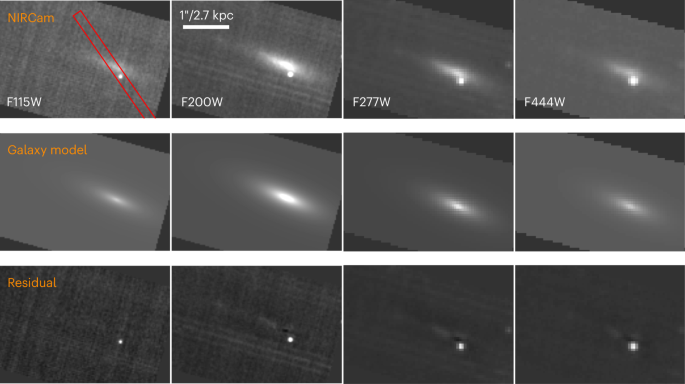2024-04-12 ペンシルベニア州立大学(PennState)
<関連情報>
- https://www.psu.edu/news/eberly-college-science/story/brightest-gamma-ray-burst-all-time-aids-search-origin-heavy-elements/
- https://www.nature.com/articles/s41550-024-02237-4
JWSTがGRB 221009Aに関連する超新星を検出、rプロセス信号は検出されず JWST detection of a supernova associated with GRB 221009A without an r-process signature
Peter K. Blanchard,V. Ashley Villar,Ryan Chornock,Tanmoy Laskar,Yijia Li,Joel Leja,Justin Pierel,Edo Berger,Raffaella Margutti,Kate D. Alexander,Jennifer Barnes,Yvette Cendes,Tarraneh Eftekhari,Daniel Kasen,Natalie LeBaron,Brian D. Metzger,James Muzerolle Page,Armin Rest,Huei Sears,Daniel M. Siegel & S. Karthik Yadavalli
Nature Astronomy Published:12 April 2024
DOI:https://doi.org/10.1038/s41550-024-02237-4

Abstract
Identifying the sites of r-process nucleosynthesis, a primary mechanism of heavy element production, is a key goal of astrophysics. The discovery of the brightest gamma-ray burst (GRB) to date, GRB 221009A, presented an opportunity to spectroscopically test the idea that r-process elements are produced following the collapse of rapidly rotating massive stars. Here we present James Webb Space Telescope observations of GRB 221009A obtained +168 and +170 rest-frame days after the gamma-ray trigger, and demonstrate that they are well described by a SN 1998bw-like supernova (SN) and power-law afterglow, with no evidence for a component from r-process emission. The SN, with a nickel mass of approximately 0.09 M⊙, is only slightly fainter than the brightness of SN 1998bw at this phase, which indicates that the SN is not an unusual GRB-SN. This demonstrates that the GRB and SN mechanisms are decoupled and that highly energetic GRBs are not likely to produce significant quantities of r-process material, which leaves open the question of whether explosions of massive stars are key sources of r-process elements. Moreover, the host galaxy of GRB 221009A has a very low metallicity of approximately 0.12 Z⊙ and strong H2 emission at the explosion site, which is consistent with recent star formation, hinting that environmental factors are responsible for its extreme energetics.



